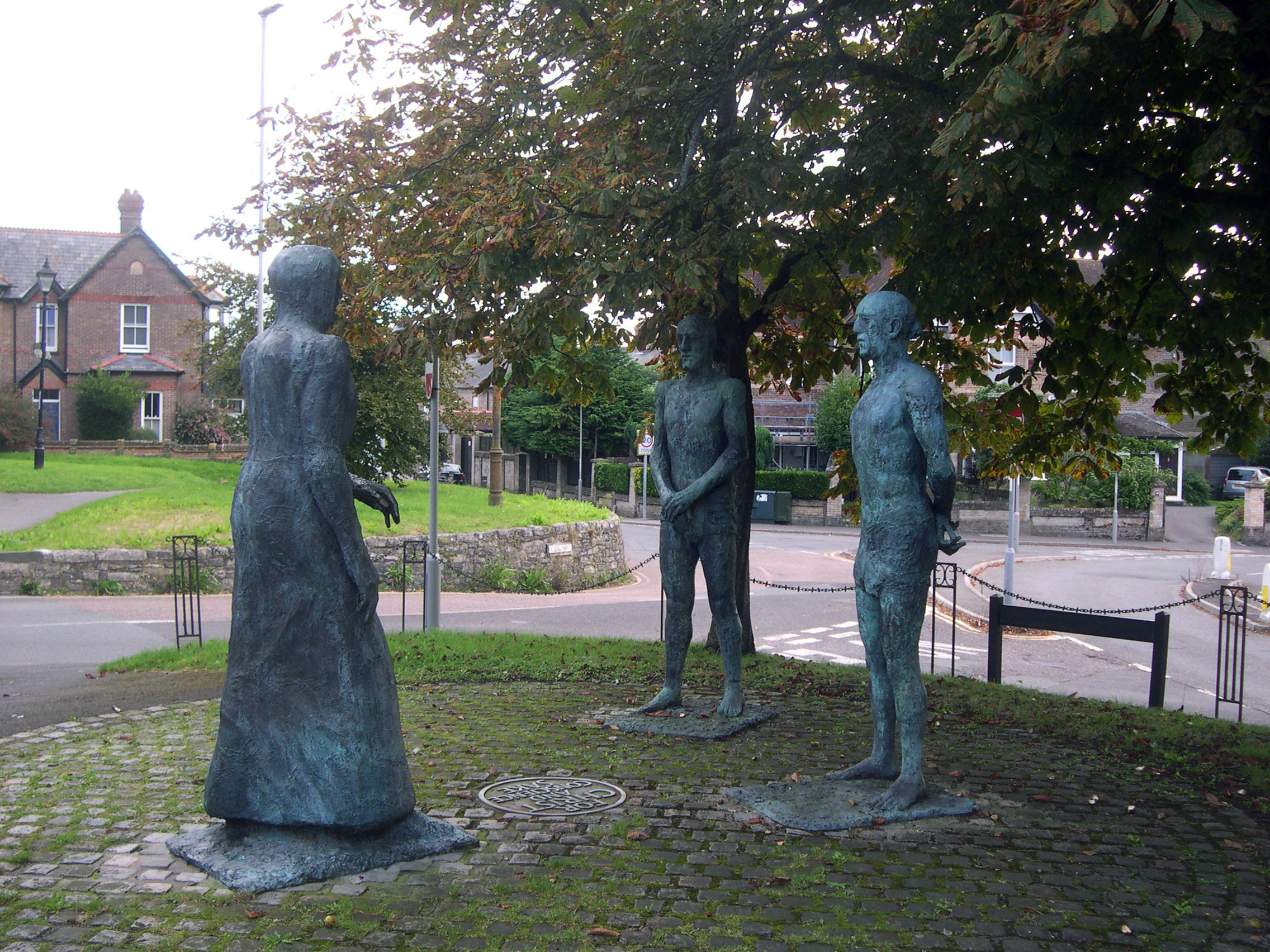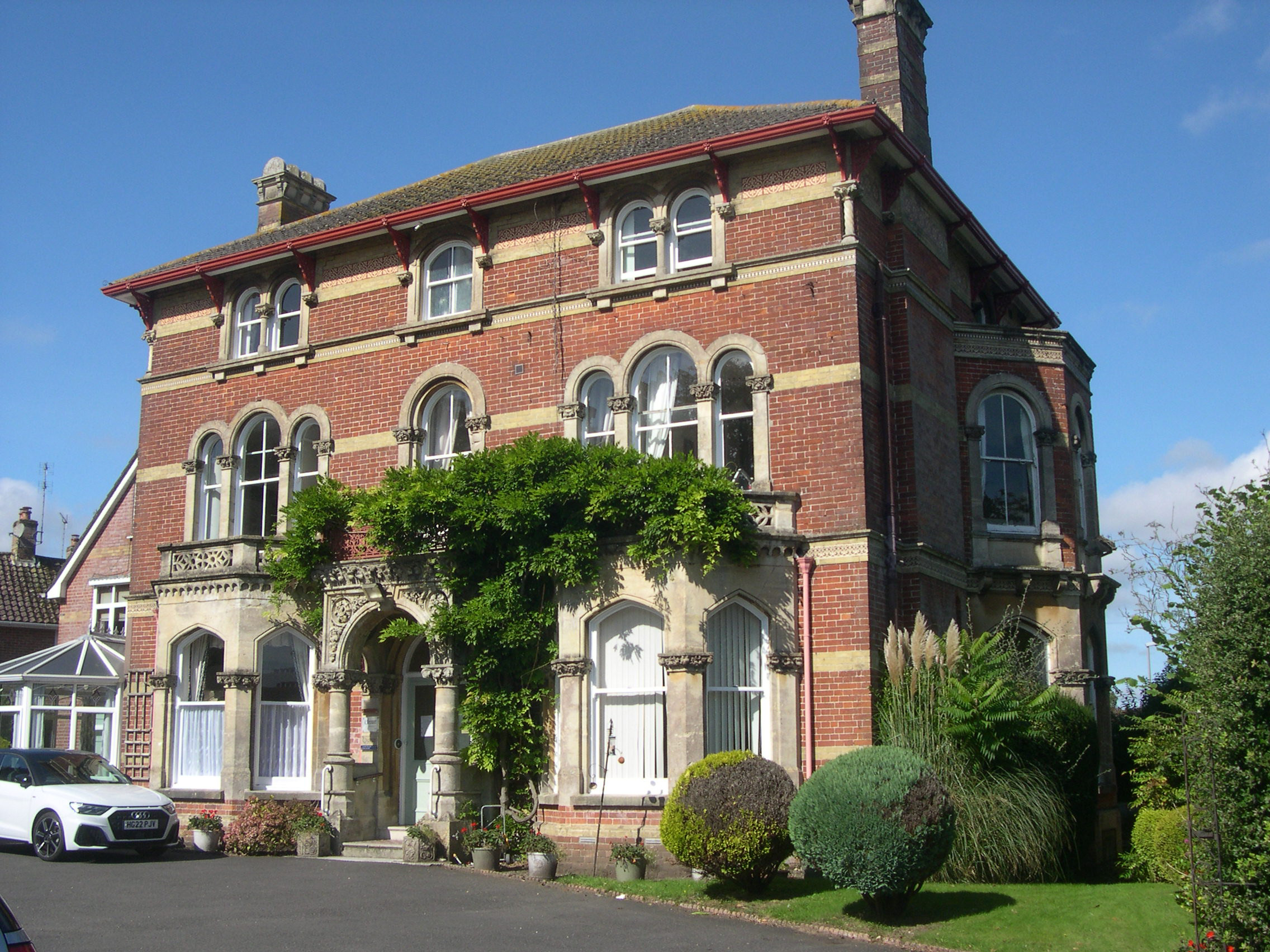I have a personal connection to Culliford House on the corner of Icen Way and
South Walks, Dorchester. My mother spent the last two years of her long life there
in the retirement home being looked after by the owner Mrs Rita Moors and her
staff before she passed away in 1997.
Definitive research into the building of Culliford House started after I found
particulars from Ensors dated 31st October 1945 held at the Dorset History Centre
under refce. D-ENS/F1/2661. This stated that Culliford House originally formed part
of the Wollaston Fields Estate, and was let on a 99 year Lease from 24th June
1866 by Dorchester Corporation.
Wollaston Fields Estate was a new term to me, but an examination of the Council
Minutes held at the History Centre ( refce. DC-DOB/38/1 and 2 ) held a mass of
references starting in the early 1850’s.
About that time, the Dorchester Town Council decided to use some land it owned,
along with land acquired from Robert WILLIAMS Esq., to alter the layout of that
area, allowing new roads, and thus new villas, to be built. Acland Road was created
running from Durngate Street through to South Walks, and off Acland Road, two
new roads Wollaston Road and Linden Avenue, connecting Acland Road with Icen
Way, were also created.
Long before any of those changes took place, the area was mainly open farm land
marked by the town gallows standing on Gallows Hill, where many executions took
place until about 1703, when the gallows were moved to Weymouth Avenue, near
Maumbury Rings. What is now called Icen Way was then Gaol Lane; later part was
renamed Bell Lane before it became Icen Way.
The Council Minutes confirm that a competition for the design of a plan for the
future development and sale of the land at Wollaston Fields was held in late 1852,
with plans from five architects then short listed for consideration by the Council. The
winner was a Mr HALL of Thornhill Square, Islington, London, and he was awarded
£25. After some changes agreed with Mr HALL, the plan was approved by Council
on 19th April 1854, and by the Treasury in a letter read to Council on 10th July
1854. Mr J. J. KNIGHT was paid £18.5s for extra survey work for the Council on the
Plan. Sadly, no copy of Mr HALL’s plan seems to have survived.
In May 1857, the Council asked Mr HALL to draw up a lithographical map laying out
his proposals for the development of Wollaston Fields, but no copy of that seems to
have survived. Later in June 1858, Mr HALL set out proposals for four classes of
houses of varying standards to meet Council requirements for some cheaper grade
housing, but again details of such specifications were not found.
Two of the other Architects short listed in the competition won by Mr HALL were
George J.G. GREGORY and Edward MONDEY. Over the coming years, both appeared
regularly in the Council Minutes as house builders actively involved in
developing the Wollaston Fields Estate.
George J.G. GREGORY’ s father John was also a builder - George was an
architect and builder by 1855, and listed in 1871 as an architect, surveyor and
substantial builder in South Street, Dorchester employing 46 men and 8 boys. He
was born at Dorchester in 1827, was elected as Mayor in 1872/73, 1884/85 and
1894, and an Alderman of the town in 1889 and 1895. He died in February 1896.
Edward MONDEY was born at Titchfield, Hampshire in 1806, but he was a builder
in Dorchester in 1831 when he rented a house and stables from Robert WILLIAMS
Esq.,, and was listed in 1851 in South Street, Dorchester as architect, surveyor and
builder employing 35 men and 6 boys. He died on 4th October 1866.
The Dorset History Centre also holds under refce. D-PMC/V/2 a copy of a Lease to
Richard DAVIS ( an innkeeper and builder employing 8 men in 1871) from the
Mayor of Dorchester of Land at Wollaston Field Estate dated 8th May 1870.
Richard was born September 1815 in Dorchester. That Lease relates to No. 14
Wollaston Road, but it seems likely he was involved in the building of other houses
on the Estate. He died in January 1887.
Turning back to Culliford House, we come across John GALPIN ( 1813 - 1882 )
who married Emily HANSFORD ( 1821 - 1899 ) at Holy Trinity church, Dorchester
on 8th October 1857 and, in 1861, they were living at 64 High West Street. John
was an Ironfounder and employer in the town, as well as a Town Councillor, Town
Mayor in 1861 and 1862, Justice of the Peace and Alderman.
A letter dated 26th June 1866 from Mr GALPIN to the Council, copy in the Minutes,
said that he is building his new house on the estate. He points to a clause in the
Lease which says that he should spend not less than £1,000, but the letter says this
sum is inadequate, and he also needs more land too. After negotiation, the Council
agree in August 1866 to cancel the old Lease, to allow him two more plots Nos. 10
and 11, provided he then spends not less than £2,700 ( some £270,000 in today’s
money ) on the development of the three plots, and Mr GALPIN to also be
responsible for the costs of levelling the said land. Did he employ a builder, and if
so which one - I don’t know.
The 1871 census then has John and his wife Emily living at Wollaston Fields. It
seems possible that they then named the property “ Culliford House “ as it appears
as such in Kelly’s trade directory of 1880 under John GALPIN. Culliford House also
appears in the 1881 census when occupied by John’s sister Charlotte GALPIN,
aged 76 an Annuitant, plus one servant. She was the unmarried daughter of
John’s parents William GALPIN ( 1774 - 1837 ) and his wife Charlotte CLARE (
1772 - 1822 ). Both John and Emily GALPIN are missing from the 1881 census,
before John GALPIN died in 1882 and his sister Charlotte died in 1886. In the
1891 census, Culliford House was again occupied by the widowed Emily GALPIN
aged 69 with two servants.
A new name appears living at Culliford House in the Kelly’s trade directory of 1895 -
that of Reginald Douglas Thornton J.P. He was born in India in 1853 and was a
Banker in Dorchester with Jury lists showing him living in various addresses -
Shirley House in West Walks in 1889, in Bell Street in 1894, No. 38 then 36 Icen
Way later in the 1890’s. When he died in 1915, his estate was worth over £94,000,
an enormous sum then, so he may have owned some of these properties.
Emily Galpin died in 1899 and, after her death, I think the House was bought by
Alfred Rolph POPE, ( 1871 - 1951 ) who was a Director of Eldridge Pope Brewery.
In 1891, Alfred was a student living with his parents at Wrackleford House, then on
29th August 1900 he married Kate RENDALL ( 1878 - 1967 ) at St Mary’s church,
Maiden Newton, having previously declared Banns at St Mary’s church at Stratton.
Later in 1900 Alfred and his wife Kate were living at 36 Icen Way, when he was an
Alderman of the town in 1889 and 1895, but by 31st March 1901 census they were
living at Culliford House .
The Electoral Register has Alfred in 1902, 1905 and 1908 living at 36 Icen Way, but
giving Culliford House as his qualifying address, whilst in 1911 and 1914 it quotes
Culliford House as his address.
Alfred and Kate were still living there in 1921 ( Electoral Register ) and were listed
there in the 1931 Kelly’s trade directory. The History Centre hold Henry Duke’s sale
particulars dated 6. 11. 1935 refce. D-HDS/SP/1935/16 - a sale of freehold of
Culliford House by auction, and again on 6th May 1939 refce. D-HDS/SP/1939/9;
both on behalf of Major A. Rolph Pope M.A., T.D., J.P. but it appears neither
auction were successful.
The History Centre then holds further auction details dated 31. 10. 1945 under
refce. D-ENS/F1/2661 from Ensors on behalf of Philip William Rolph Pope the
vendor. He was son of Alfred and Kate so it seems the property was transferred to
him after it failed to sell in 1939, by which time the 1939 census says Alfred and
Kate had moved out of Culliford House to South Court Avenue.
Philip POPE was living with his parents at Culliford House ( Law Examination
records ) in 1931, but is missing from the 1939 pre war census. This may be
because at North Audley Street, Westminster he married Joyce W. H. SLADE on
15th February 1939.
Again it seems the House failed to sell in the 1945 auction above as a note
attached in the file says that it was sold later by private treaty for £2,000 to a Mr
EVANS of 57 South Court Avenue. I have failed to find the identify this Mr Evans.
Mrs Rita Moors started Culliford House Residential Home at Icen Way in 1984.
Before that she was running the shop and Post Office in Fordington, then the
Montrose Residential Home in Prince of Wales Road. Culliford House is still run as
a Residential Home by her daughter and team.
In it’s earlier life, Culliford House included a service cottage, stables and garaging,
but these have been split off at some point, now called “ The Old Stables “ in Linden
Avenue, situated on the corner with Icen Way. In 1891 I think it was called Culliford
Cottage, occupied by Albert Dawney a domestic gardener and his wife.

Picture:© By Richard Smith 2024
On the corner outside Culliford House, on the site of the old town Gallows, is the
Dorset Martyrs Memorial to all who died there up until 1703, including both
Catholics and Protestants who died for their religious beliefs, designed by the
acclaimed sculptor Elizabeth Frink, and placed there in 1986.
21. 9. 2024
Richard Smith - orchidgrower@btinternet.com
|


